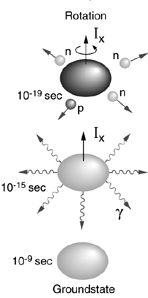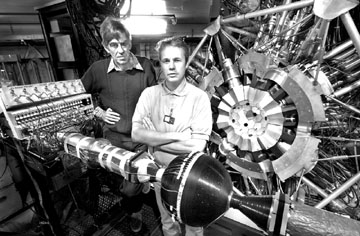

David Ward and Paul Fallon of the Nuclear Science Division use the 8-pi Detector to study spinning nuclei. Photo by Roy Kaltschmidt (XBD9903-00380.gif)

A spinning compound nucleus is formed when a beam nucleus collides with a target nucleus. After shedding neutrons and protons, the new nucleus quickly drops to its ground energy state by emitting gamma rays. Their direction, number and timing allow the nature and behavior of the rapidly spinning nucleus to be reconstructed.